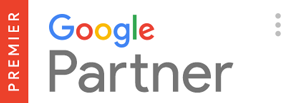Done right, PPC campaigns get fast results on a budget. But too often, advertisers face high PPC costs for little engagement. As the economy slowly recovers from the COVID downturn, brands are looking for cost-effective ways to bring more customers into the door (virtually, of course).
Whether you’re dusting off your pre-COVID campaigns or trying a new campaign entirely, you still need to make the most of every budget dollar. Fortunately, you can control how much you spend on PPC, thanks to daily campaign limits.
But so many factors affect your PPC costs. Keywords, ad copy, landing pages, and much more affect your return on investment. Cost per click, or CPC, is a smart metric to evaluate your budget efficacy, especially early in a campaign.
Advertisers who optimize PPC get more dollars back for every click generated. CPC optimization reduces irrelevant clicks and brings more interested, engaged users to your site, boosting conversions in the process. If you want more results from Awareness-stage campaigns, it’s time to overhaul your CPC.
5 tips to reduce your cost per click
But how do you get your CPC under control? After all, you need to bid high enough so you can win auctions. But if you bid too low, you’ll never get any traction from PPC.
The average CPC across all industries is $2.69. But if you’re in a more competitive industry, like law, you can expect to pay $9 or more per click. No matter what industry you’re in, CPC optimization helps you pay less for more conversions.
CPC is a fine balancing act. Follow these 5 tips to keep your Google Ads CPC low enough to see positive ROI.
1. Stop what’s not working
If you’ve been running your campaign for longer than two weeks, pause any ineffective keywords. You don’t need to target every keyword under the sun to get results. Finesse and focus will get the most results.
Which keywords get a lot of clicks? Of those clicks, how many are relevant? Do these clicks eventually lead to conversions?
If the keyword doesn’t produce meaningful results, pause it. This is especially true for general, high-competition keywords. “Couch” will get a lot of clicks, but you’ll pay dearly for such a competitive keyword, and likely for zero valuable clicks.
Keywords need to be specific enough to drive value in the form of dollar signs. Look at the total number of clicks for each keyword, taking the conversion rate into consideration. If a keyword gets a lot of clicks, but has zero engagement or a high bounce rate, pause it.
When you pause what’s not working, you can route budget dollars to what’s working.
2. Use negative and long-tail keywords
Once you’ve paused under-performing keywords, you should have more room in your budget to focus on keywords that matter.
While competitive, short-tail keywords might get a lot of clicks, these clicks usually come at a big cost and little reward. Long-tail keywords, on the other hand, tend to get fewer clicks, but they’re less susceptible to competition and show a high level of user intent.
To find effective long-tail keywords, go to your Search Terms report in Google Ads. This displays the queries customers use to see your ads. Do any of these keywords sound like a safe bet?
Add them to your campaign and monitor its performance closely over the next few weeks. If it works, great! If not, pause the keyword and continue testing.
But what do you do if you see irrelevant keywords in your Search Terms report? This is a prime opportunity to add these queries as negative keywords. This is critical to limiting irrelevant clicks and decreasing your CPC.
What does your brand not do? What words don’t fit into your offering?
For example, some of our clients add “free,” “cheap,” and “digital” as negative keywords. You’ll see fewer clicks by setting these limits, but the clicks you do get will be more valuable, optimizing CPC.
3. Rethink your targeting options
Google Ads automatically runs on a 24/7, worldwide basis. Unless you truly do serve the entire world, you need stringent targeting. Ad schedules and geo-targeting can make a world of difference for your CPC.
Are your customers really online Tuesdays at 3 AM? If not, it’s best to schedule your ads to appear when customers are online. If you run ads 24/7, you’re more likely to fall prey to bots or users who just aren’t a good fit for your brand.
Schedule your ads based on days of the week and the time of day. Continue looking at your Google Ads data to see when your customers are online, and make sure your ad schedule matches that.
If you don’t need to target users in Kyrgyzstan, apply geo-targeting limits to your ad campaign. Preserve your budget and optimize CPCs by advertising where your customers are. Target locations on a national, state, or municipal (ZIP code) basis. With this setting, your ads will only display to users in that particular location.
You can set up negative geo-targeting, too. This is perfect if your business can only operate in a certain state or locality.
4. Improve your landing pages
There’s plenty to optimize within your PPC interface, but what do users see once they get to your website? What happens after you pay for a click?
In an ideal world, you would keep that user on-site, converting them with your offer. But all advertisers know that, more often than not, these clicks drop off. While you can’t prevent all site bounces, you can minimize them with smart landing page improvements.
That includes:
- Embracing responsive design.
- Testing your desktop and mobile speed.
- Matching your ad copy with the landing page offer. If they don’t match, write a more relevant landing page. And never send PPC leads to your generic homepage!
- Writing better landing page copy. That means reiterating the offer from your ad, including a snippet about your company, showing how you solve customer problems, and reiterating the offer.
5. Split test your campaigns
Some ads have better CPC than others: these ads are generally better for your budget and goals. Try conducting a split test to see which ads perform best.
You can do this manually by copying the same ad group and displaying two versions of your landing page to the same audience. Be sure to change one element at a time; approach this as an experiment so you know which changes improved CPC.
You can also try Google’s responsive search ads (RSA) for easier A/B testing. This allows you to write multiple headlines and descriptions. Google will then test a combination of headlines and descriptions, optimizing for clicks and conversions.
The Bottom Line
Get more traffic to your site and make your PPC more profitable with these 5 tips. CPC reduction is an important part of optimizing your PPC campaigns. CPC isn’t the be-all, end-all metric, but it’s still an important litmus test to make your campaigns more effective, especially in their early days.
If you’re not sure where to go from here, consult with a PPC expert. Logical Media Group’s team of paid ad pros boost ROI with out-of-the-box strategies. Get a free brainstorming session now.








